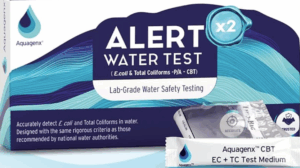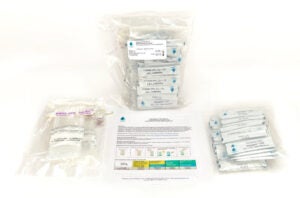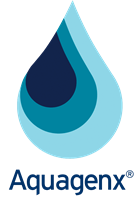Nitrates and Nitrites in Well Water
Guest post by Christopher Roemmele, PhD
If you own a farm and grow different types of crops such as wheat, corn, or soybeans, or if you are a homeowner and want to keep your lawn and garden lush and green, you might add fertilizer to help your plants and lawn. Since the 1950s, commercial fertilizers have been laden with compounds rich in nitrogen.
Nitrogen is by far the most abundant gas in our atmosphere (78%). It is a critical building block component of protein, which we need a lot of to maintain good health, and DNA (deoxyribonucleic acid), the structure in your body’s cells that makes you…you. Nitrogen carries all the information about you throughout your body.
Plants also need nitrogen to make beneficial nutrients consumed by humans and animals.
Nitrates and nitrites are both nitrogen-based chemical compounds, but they have distinct chemical structures, properties, and functions in our environment and in humans and animals.
 Difference Between Nitrates and Nitrites
Difference Between Nitrates and Nitrites
Nitrates and nitrites are chemical compounds that contain nitrogen and oxygen. Their difference comes in the number of oxygen atoms they carry. Nitrates (NO₃⁻) contain one nitrogen atom bonded to three oxygen atoms, while nitrites (NO₂⁻) are composed of one nitrogen atom bonded to two oxygen atoms. Both chemicals are quite water-soluble, meaning that water can easily dissolve and incorporate them.
Nitrates and Nitrates in Groundwater
Nitrates occur naturally in soil and are formed as part of the nitrogen cycle when decaying plant matter is broken down by bacteria. Nitrate levels can increase when humans contribute fertilizers, animal waste, and wastewater to the watershed. Nitrates are also used in the food industry as preservatives and for coloring, and in some pharmaceutical and medical products.
As essential as nitrogen is, it can also sometimes be a bad thing in well water and tap water. Both nitrate and nitrates are quite water-soluble, meaning that water can easily dissolve and incorporate them. However, this characteristic can pose problems for well water.
When artificial fertilizers composed of nitrogen compounds came on the market and were more widely used by farmers and non-farmers alike, those nitrogen-based chemicals began to leach or percolate downward into groundwater. This has been occurring for decades, which is plenty of time for groundwater to transport such chemicals and contaminate aquifers that are drinking water sources.
Nitrite is less abundant than nitrate in groundwater. It too is a product of the nitrogen cycle and is also utilized by the food industry as a preservative to maintain color and flavor and prevent bacterial growth. High concentrations of nitrate or nitrite might also be indicative of pesticides, which get rid of annoying pests and insects that feed on plants grown on a farm, or in a garden or lawn.
High nitrate or nitrite concentrations in drinking water can cause Blue Baby Syndrome, also known as cyanosis. This is when a baby’s blood loses the ability to transport oxygen around the body. Babies are more susceptible because their stomachs are not fully developed to destroy the nitrate upon entry.
EPA Guidelines for Nitrates and Nitrites in Groundwater
The U.S. EPA says while nitrate does occur naturally in groundwater, concentrations greater than 3 mg/liter generally indicate contamination. They point to a more recent nationwide study that found concentrations over 1 mg/liter nitrate indicate human activity. EPA’s maximum contaminant level (MCL) for nitrate to protect against Blue Baby Syndrome is 10 mg/liter.
How to Test for Nitrates and Nitrites in Private Wells
Because private wells are not federally regulated, well owners are responsible for testing their own groundwater sources for potential contaminants, including nitrates and nitrites. Well owners either send samples to a lab for analysis, hire a water testing professional, or buy DIY Nitrate/Nitrite tests online or in home improvement stores.
If you send samples to a state certified or environmental laboratory you should contact the lab first, as they will likely want you to use specific sample collection items for testing and analysis.
What To Do If Your Well Water Contains High Levels of Nitrates and Nitrites
If your groundwater is high in nitrates and nitrates, do not boil the water and then cool it down for use, as that will only increase the concentration of the contamination. There are special filters and processes that can help, such as reverse osmosis, ion exchange, distillation, and electrodialysis.
Nitrates and nitrites in water are important indicators of water quality, originating from agricultural, industrial, and natural sources. They can pose significant health risks and environmental concerns. When the most vulnerable of populations, babies, are most at risk, it is vital that well owners are aware of these invisible but harmful contaminants in groundwater.
Christopher Roemmele, PhD., is Associate Professor and Assistant Chairperson of Earth and Space Sciences at West Chester University, PA
Key Terms
Nitrates and Nitrites: Chemical compounds that contain nitrogen and oxygen. Their difference comes in the number of oxygen atoms they carry.
Nitrogen: The most abundant gas in Earth’s atmosphere
Blue Baby Syndrome: When a baby’s skin has a bluish discoloration, especially when they cry. The discoloration is most obvious in baby’s lips and hands. This condition is caused when there is a shortage of oxygen in your baby’s blood. The low oxygen level causes their skin to turn a different color than normal (like blue or purple).
Aquagenx Well Water Test Kits
•P/A test results for E. coli and Total Coliforms, 100mL samples
•Distinguishes between E. coli and Total Coliforms
•Simple test, color change test results easy to interpret
•No labs or electricity required
•Room temperature incubation at 77° Fahrenheit and above
•Room temperature test results in 20-48 hours
•Three year shelf life of E. coli growth medium when stored properly
Buy on Amazon & Walmart
Buy kits that contain 2, 5, or 10 tests

Buy In Bulk from Aquagenx
Buy kits that contain 25, 50 or 100 tests

